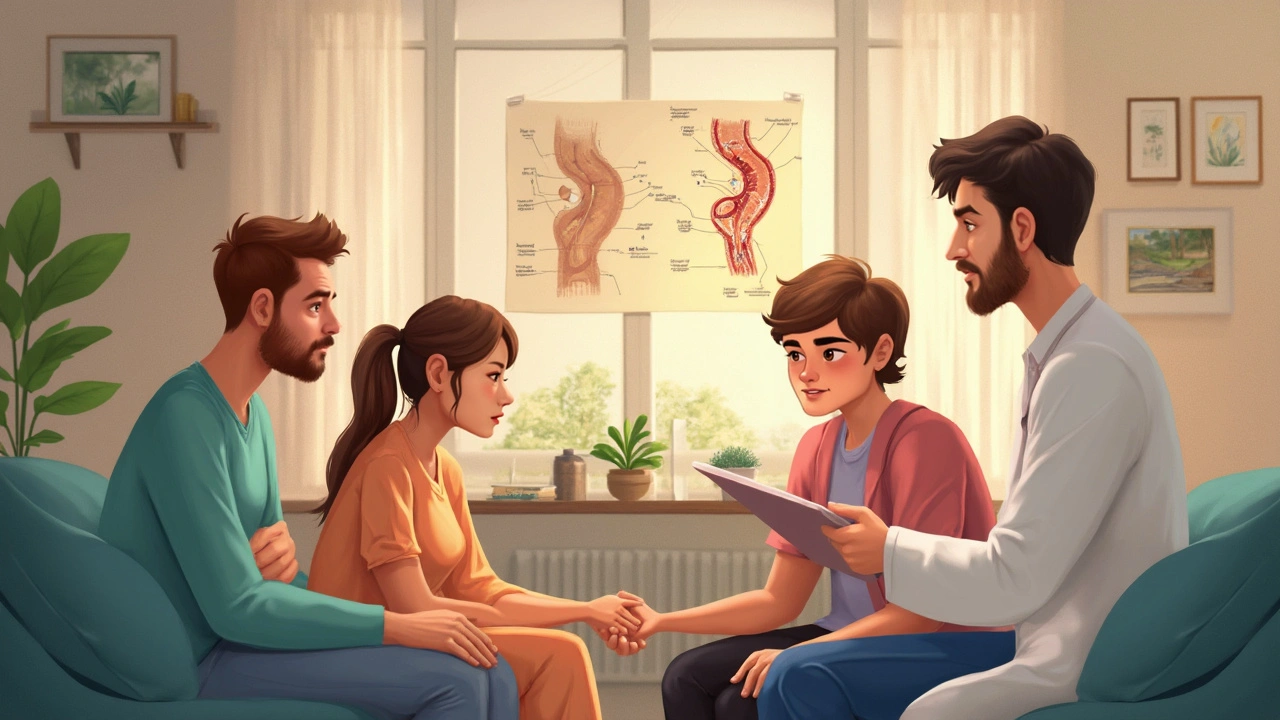Spina Bifida: What It Is and How to Manage It
Spina bifida is a birth defect where the spine doesn’t close all the way during early pregnancy. It can affect the spinal cord, nerves, and surrounding muscles, leading to a range of physical challenges. Most people hear the term and think it’s always severe, but the reality is more nuanced – some folks have mild symptoms while others need lifelong medical support. Knowing the basics helps you spot early signs, decide on treatment, and plan a comfortable life.
Types and Symptoms
There are three main types:
- Spina bifida occulta – the mildest form. The vertebrae have a tiny gap, but most people never notice any problems.
- Meningocele – a sac of fluid pushes through the opening, but the spinal cord stays mostly intact. Kids may have limited mobility issues.
- Myelomeningocele – the most serious type. The spinal cord and nerves protrude, often causing paralysis, bladder problems, and hydrocephalus.
Common symptoms include a visible “cobblestone” lump on the back, muscle weakness in the legs, numbness, and trouble controlling the bladder or bowels. Some children develop learning difficulties or orthopedic issues like scoliosis. If you notice any of these signs at birth or in early childhood, ask a pediatrician for a detailed exam right away.
Treatment and Everyday Living
Treatment starts with a thorough diagnosis – usually an ultrasound during pregnancy, followed by MRI or CT scans after birth. Surgery to close the opening is often done within the first 48 hours for myelomeningocele, which can reduce infection risk and improve long‑term outcomes.
Beyond the initial surgery, a team of specialists (neurologists, orthopedists, urologists, and physical therapists) works together. Physical therapy helps maintain muscle strength and mobility, while braces or wheelchairs provide support. For bladder control, doctors might recommend catheterization or medication.
Hydrocephalus, a buildup of fluid in the brain, is common with myelomeningocele. A shunt system is often placed to drain excess fluid and prevent brain damage. Regular check‑ups are crucial because shunts can malfunction.
Living with spina bifida is about adapting daily habits:
- Stay active: Tailored exercises keep joints flexible and prevent secondary issues. Even low‑impact activities like swimming are great.
- Skin care: Pressure sores develop quickly if you sit or lay in one spot too long. Change positions regularly and inspect skin daily.
- Bladder management: Follow your doctor’s schedule for catheter use, and stay hydrated to avoid infections.
- Education & support: Schools often need an Individualized Education Plan (IEP). Connect with local spina bifida associations for resources and community.
Medication can help with muscle spasticity, pain, or seizures. Always discuss dosage and side effects with a pharmacist – our online pharmacy, MapleMeds, can ship prescribed meds safely to your door.
Emotional health matters, too. Many families feel overwhelmed, so counseling or peer groups can make a big difference. Remember, a diagnosis doesn’t define a life – with the right team and tools, people with spina bifida lead full, active lives.
If you’re searching for reliable medication guides, dosage advice, or want to order a prescription safely online, MapleMeds is here to help. Our Canadian‑based pharmacy offers discreet shipping, expert pharmacist support, and competitive pricing. Feel free to explore our resources or reach out with any questions.
Spina bifida may bring challenges, but it also brings a community ready to share advice, tips, and encouragement. Stay informed, stay active, and lean on the support around you – you’ve got this.
Mar
25

- by Gareth Harington
- 0 Comments
Understanding Spina Bifida in Unborn Babies: The Role of Research
Spina bifida is a congenital condition that can significantly impact an unborn baby’s health and development. It's a challenge for many parents-to-be to understand and address. This article dives into the intricacies of spina bifida, highlights advancements in research and early detection, and focuses on innovative treatment options while sharing tips on supporting an expecting family. Understanding these aspects is crucial for making informed choices and providing proper care.